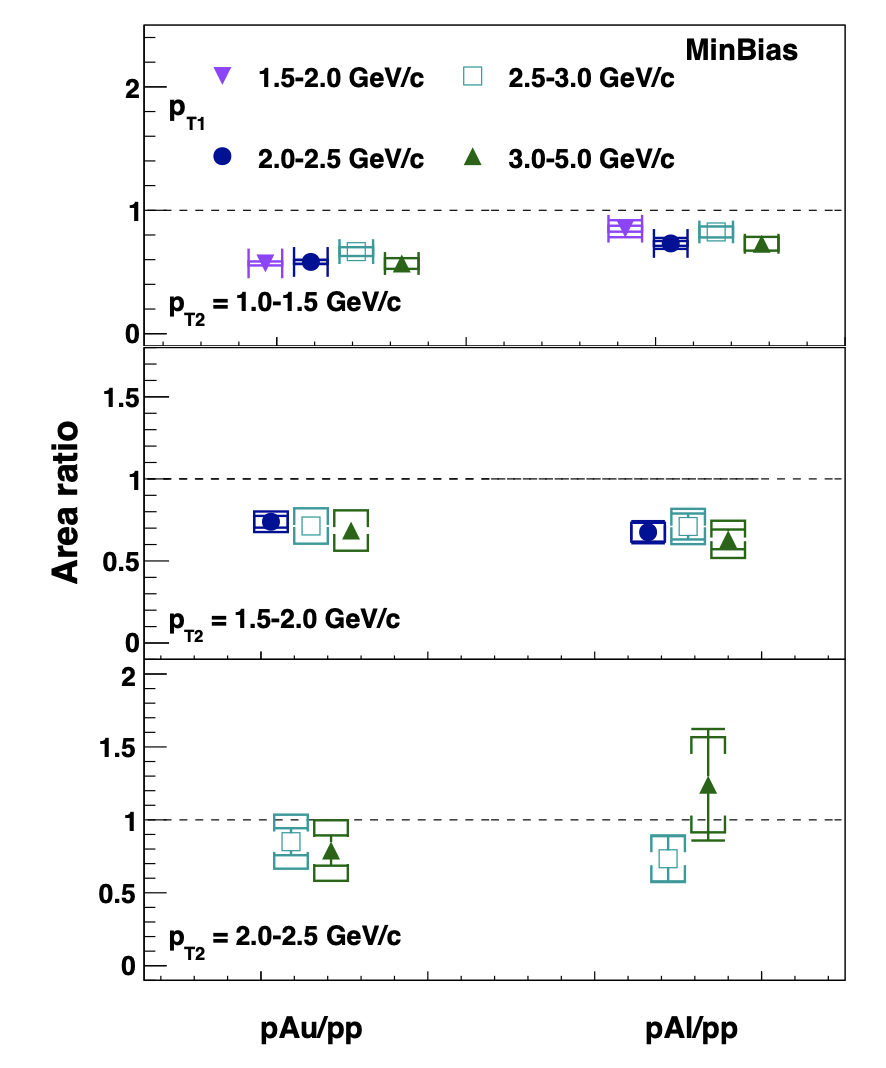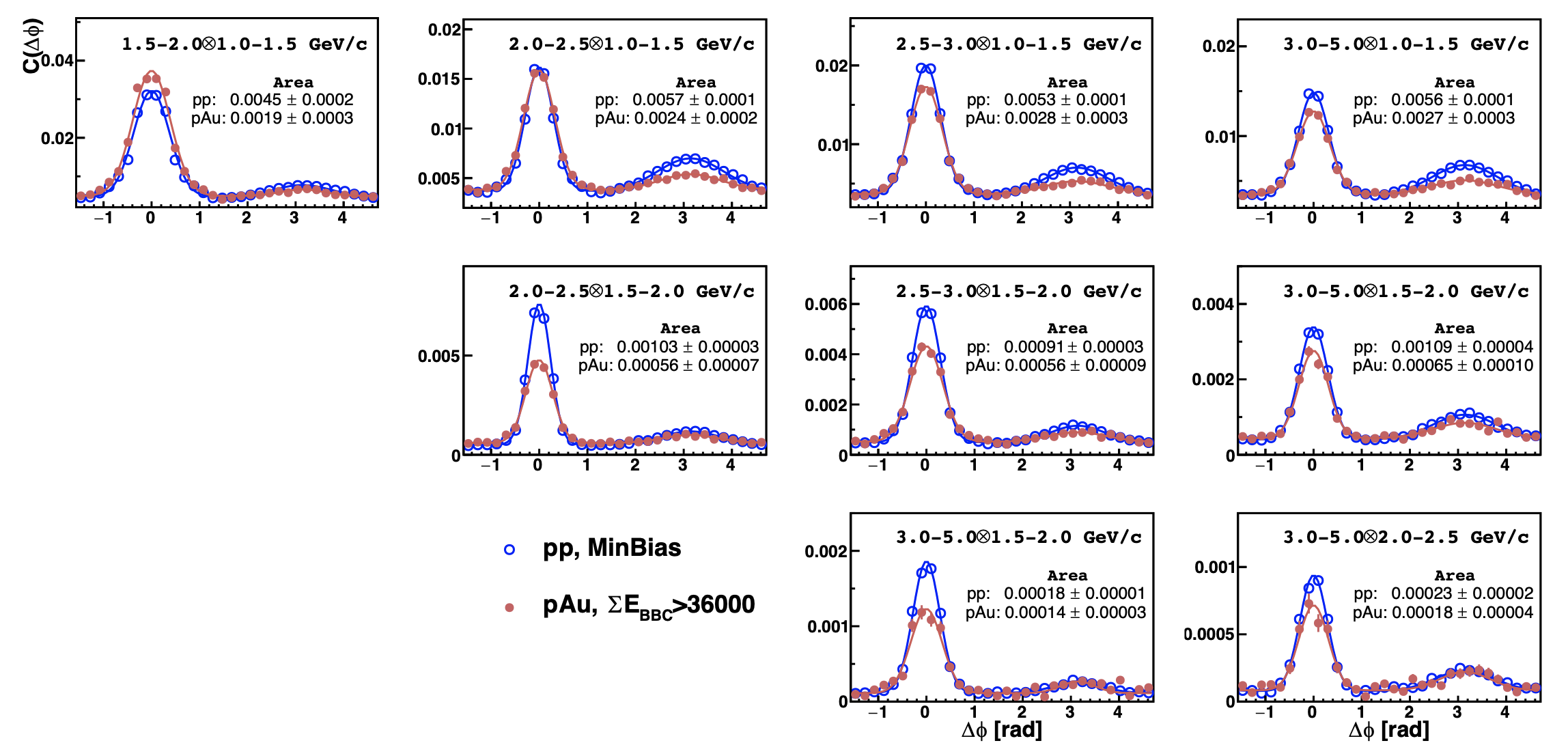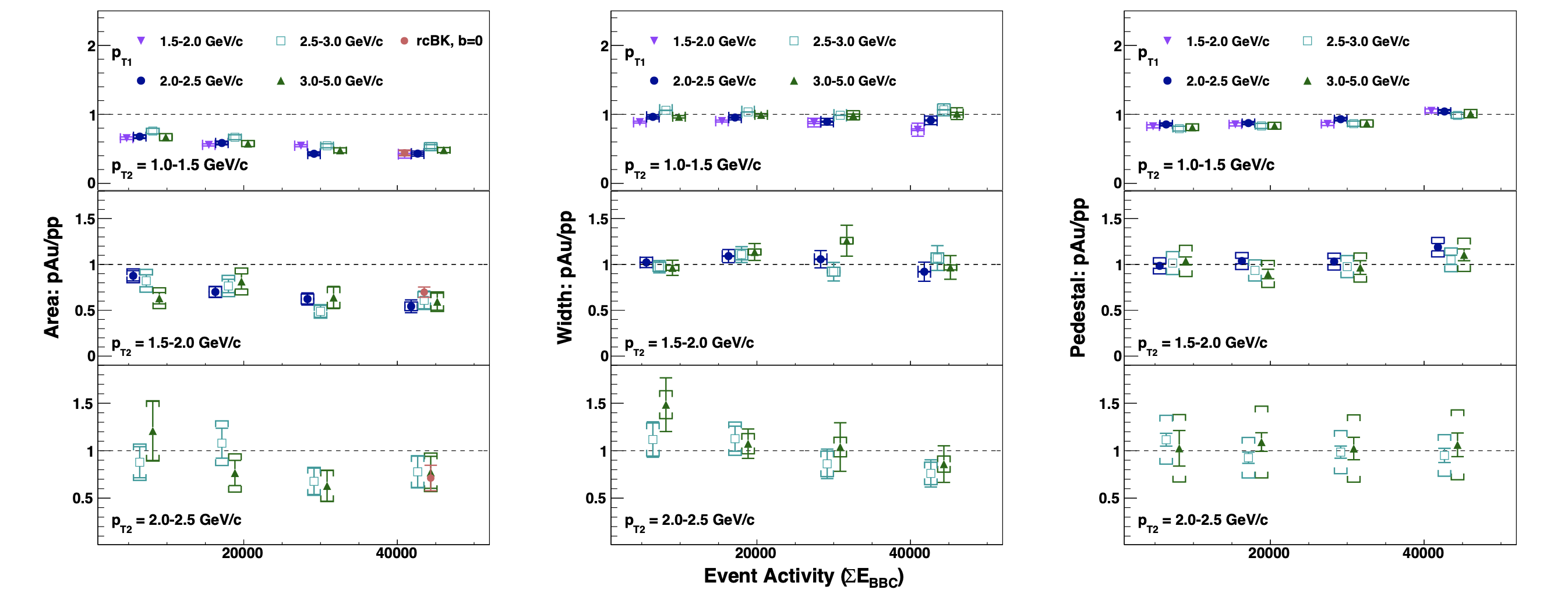- xchu's home page
- Posts
- 2024
- October (1)
- 2023
- 2022
- 2021
- December (2)
- November (1)
- October (1)
- September (1)
- August (2)
- July (1)
- June (3)
- May (2)
- April (3)
- March (1)
- 2020
- October (2)
- September (1)
- August (5)
- July (1)
- June (3)
- May (3)
- April (1)
- March (2)
- February (4)
- January (1)
- 2019
- My blog
- Post new blog entry
- All blogs
Dipi0 correlation paper proposal
Title: Di-$\pi^0$ correlations in p+p, p+Al and p+Au collisions at $\sqrt{s}$ = 200 GeV at STAR
PAs: Xiaoxuan Chu, Elke-Caroline Aschenauer, Akio Ogawa, Zhengqiao Zhang
Intended journal: PRL
Abstract:
The STAR Collaboration reports measurements of back-to-back azimuthal correlation of di-$\pi^0$ produced at forward directions in p+p, p+Al and p+Au collisions at a center-of-mass energy of 200 GeV. Results are given as a function of transverse momenta of trigger $\pi^{0}$ in range of 1.5 GeV/c $< p_T <$ 5.0 GeV/c and associated $\pi^0$ in range of 1.0 GeV/c $< p_T <$ 3.0 GeV/c at varying pseudorapidity from 2.6 to 4.0. The kinematics of di-$\pi^0$ is expected to probe partons in Al and Au nucleus at small $x$ where gluon density rises sharply. A clear suppression of the correlated yield of back-to-back pairs is observed in p+Al and p+Au compared with the reference p+p collisions. Enhanced suppression found in p+Au than p+Al collisions exhibits $Q_s^2$ dependence on $A$. Suppression as a function of event activity and $p_T$ points to non-linear gluon dynamics arising at high parton densities.
Conclusion:
The measurements of azimuthal correlations of di-$\pi^0$ in forward region are performed using 2015 STAR 200 GeV p+p, p+Al and p+Au data. The correlated yields of back-to-back pairs were analyzed for various kinematic selections in $\pt$. A clear suppression of back-to-back yields is observed in p+A collisions in comparison with the reference p+p collisions with stable pedestal. Suppression is observed to increase with higher activity selection and for pairs probing smaller $x$ with low $p_{T}$. It is the first measurement of studying nuclear effect dependence on $A$ by varying different nucleus beam species, suppression is enhanced in the collisions with higher $A$. No increase in the azimuthal angular correlation width is shown within experimental uncertainties.
Table:
Tab.1: Definition of the event activity classes in p+Al and p+Au collisions as fractions of the analyzed event sample corresponding to the energy deposited at east inner beam beam counter (BBC).

Figures:
Fig.1: Di-$\pi^0$ correlations in MinBias pp, pAl and pAu collisions. Left: trigger $\pi^0$ $p_T$ is from 2.0 to 2.5 GeV, associated $\pi^0$ $p_T$ is from 1.0 GeV to 1.5 GeV, right: trigger $\pi^0$ $p_T$ is from 3.0 to 5.0 GeV, associated $\pi^0$ $p_T$ is from 2.0 GeV to 2.5 GeV. GBW model from theory predictions is used to incorporate gluon saturation in p+Au [A. Stasto et al., Phys. Lett. B, 716(2012) 430-434].

Fig. 2: Area ratio of MinBias pAl and pAu over pp in different $p_T$ ranges of trigger $\pi^0$ and associated $\pi^0$.

Fig. 3: Di-$\pi^0$ correlations in MinBias pp and "high activity" pAu collisions. 
Fig. 4: Area, width and pedestal ratio of pAu over pp depends on event activity. rcBK [Javier L. Albacete et al., Phys. Rev. D 99, 014002] predicts the area ratio of central pAu collisions (impact parameter b=0) over MinBias pp.

Fig. 5: Area ratio of pAl over pp compared with pAu over pp at different event activity.

Paper draft v1:
https://drupal.star.bnl.gov/STAR/system/files/dipi0Corr_paper_v1.pdf
Paper preview:
https://drupal.star.bnl.gov/STAR/system/files/Paper_preview_xchu.pdf
Analysis note:
https://drupal.star.bnl.gov/STAR/system/files/dipi0Corr_note_v1.pdf
Relevant presentations:
Spin PWG summary of pp: https://drupal.star.bnl.gov/STAR/system/files/dipi0_0701.pdf
Spin PWG summary of the first period of pAu: https://drupal.star.bnl.gov/STAR/system/files/dipi0_0708.pdf
Spin PWG summary of the second period of pAu: https://drupal.star.bnl.gov/STAR/system/files/dipi0_071120.pdf
Spin PWG summary of pAl: https://drupal.star.bnl.gov/STAR/system/files/Spin_PWG_0930.pdf
- xchu's blog
- Login or register to post comments
